I should learn by now that big-league Canadian whisky and I don’t really mesh. While learning about drinking, I did not come to value “smoothness” (a term that has a nebulous definition when it comes to whisky) above all, including above flavor. Furthermore, after several ill-spent college years drinking overly-sweet stuff like Smirnoff Ice and neon-dyed “Schnapps” (an insult to actual Schnapps), I developed an aversion to cloyingly-sweet beverages of all kinds, especially when accompanied by the flavor of grain neutral spirits, which have a distinct flavor and aroma of glue or industrial solvents. So when I taste something like J.P. Wiser’s Canadian Rye and I get overly-sweet, glue-flavored, “smooth” whisky that costs so little to produce that they can make a profit at $15 a bottle, I tend to react poorly.
Along comes a bottle that offers to turn the tide: A $55 bottle of Canadian blended whisky with 18 years of aging under its belt. I mean, it’s a great value but not dirt-cheap, and you can’t fake 18 years in oak. There’s not a lot of information online about the whisky itself. It’s a Hiram Walker brand previously known as Wiser’s Very Old. It is a blended Canadian whisky, meaning a blend of grain whiskies (rye optional). The components are mashed, distilled, and aged separately, and then blended together in batches for bottling. The 18 is bottled at an anemic 40% ABV.
I dropped the $55 and figured that if nothing else, it would make a forgettable sipping whisky that wouldn’t object to an ice cube on a humid summer evening…
[Update 9/12/2017] An interesting discussion thread on Connosr popped up in the comments below, if you’re curious. As a result of that discussion, I should clarify that Wiser 18 contains NO RYE in its mash bill, unlike many Canadian blends, and is entirely or *almost* entirely corn whisky, distilled to a high proof, and aged in refill ex-bourbon. I say “almost” because the recipe is not necessarily set in stone, and could vary over time. It was also pointed out to me in that thread that it’s possible to get a “bad bottle” of Wiser 18, and that may have happened to me here. I’m not inclined to spend another $55 to find out. If I can get a bad bottle, so could any other customer.Nose: Glue. After a rest in the glass to disperse any aroma of adhesives, the nose is suggestive of rye but contains a lot of vanilla and heavy, syrupy sweetness. Somewhat cloying, like a heavily frosted cinnamon bun on a sweltering hot day. Also, banana bread, corn pudding, and a ghostly echo of that glue (think grade-school rubber cement).
Palate: Syrupy body. Rye bread up front, complete with toasted caraway seed, plus rye grain cinnamon and clove. The sweetness is suffusive, but not quite as cloying as suggested by the nose. It’s also not very nuanced – try to imagine eating a spoonful of white corn syrup out of the bottle.
Finish: Short. As soon as I swallow, the whisky’s character evaporates. There might be a whiff of vanilla and clove left behind.
With Water: I hesitate to add any water at all, but a few drops release an amped-up wave of bakery spices before settling back into cloying sugary-ness. The palate is unchanged, as is the finish. No water needed here.
Overall: I would have assumed that 18 years in oak would have at least added some oaky complexity or mellowed those weird glue notes into something nuanced. Tasted blind, I would have said this was American rye at 4 or 5 years of age that had been watered down to 30% ABV and had corn syrup added to it. None of that is true, but that is the impression left upon me by my three attempts to appreciate the “Tradition of Quality and Craftsmanship” promised by the label.
At the risk of reawakening the tired NAS discussion, I’d like to point out that this is a good example of advanced age on the label not equating to quality in the glass.
I honestly don’t know what I’m going to do with the rest of the bottle. I can’t think of any cocktails that this would improve. Coke, maybe?



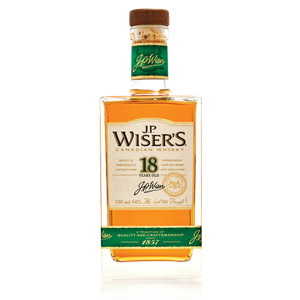
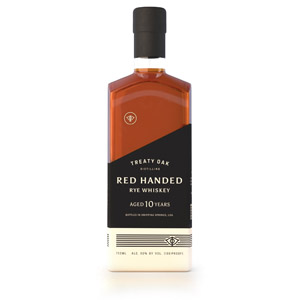

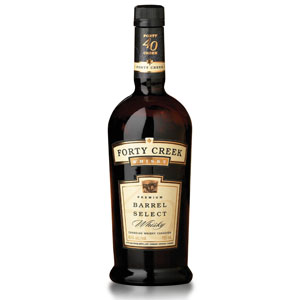
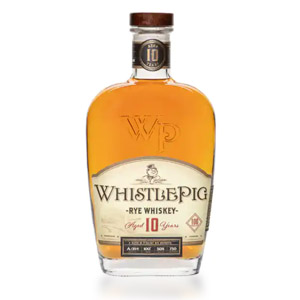
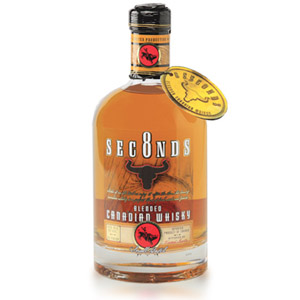
Seems spot on in certain aspects of the review. The problem with JP Wiser 18 comparing to other Canadian blends is that JP18 is made entirely of the Base grain whisky. Blended scotch is made up high distilled Base Grain whisky along with the Single Malts of good ratio of BaseGrain/SingleMalt to the recipe. Canadian Blends on the other hand has a very low Flavoring Rye whisky(even 1% to the total), the rest being grain whisky. With JP18 all of it is the highly distilled Base Grain whisky of 189proof, 1 proof less compared to Vodka. In other words, this Aged Vodka, 18 years in used barrels.
Sounds right up my alley, then
“At the risk of reawakening the tired NAS discussion, I’d like to point out that this is a good example of advanced age on the label not equating to quality in the glass.”
It’s a bit of misrepresentation of the NAS issue to say that it’s about advanced age on the label not equating to quality in the glass; if you ripped the label off, and made it NAS, would it be any better or any worse? Would it suddenly become some ”mysterious” concoction, like Corryvreckan, that now “couldn’t” be made without being having its age concealed?
Does the ABV number on the bottle make the whisky any better? Would that be any reason to take it off if someone in the industry didn’t want anyone to be “biased” toward higher strength products or because it cramps the style of those who want to sell you lower-strength products?
The central issue with NAS is that age, like ABV, has an effect on whisky performance/quality, no matter how assessed or by whom, and is relevant information on that basis alone, not because this information – or any information – reads anyone’s mind or “guarantees” that said product will match their idea of quality. Age, like ABV, simply matters to the product, and it’s the reason that the product is aged in the first place; if this whisky was aged twice (or half) as long, it would simply be a different whisky regardless of who applied what descriptors to it after the fact or whether anyone liked the 18 more than the 36 but less than the 9.
Nice review otherwise.
Jeff, I’m going to copy your responses on NAS in a document as you eloquently articulate my thoughts on NAS shenanigans. Would anyone’s enjoyment of Ardbeg Corryvreckan be diminished if it were called Ardbeg Corryvreckan 6 Year Old (or whatever)? Would it be so difficult for distillers to do something similar to Compass Box, which posts the exact contents of their whiskies on their website? Withholding this information is not “increasing the mystery” it’s just shady.
To answer your question, yes, probably. Enjoyment would be diminished because they wouldn’t be able to sell Corryvreckan due to misconceptions in the marketplace about the necessity of aging scotch more than 10 years (a misconception that is the industry’s own fault, but that’s beside the point). Without sales to support the expression, they would stop selling it and then probably wait until the whisky in it is older, resulting in a more expensive expression that has a different (not necessarily better) profile. It has been extremely difficult for Compass Box to post exact contents on their website, in fact the law has prevented them from doing exactly that. By law, if your scotch whisky consists of whisky of two (or more) different ages in it, you legally can only reveal the youngest one. Period. Personally, I would rather have the information than not, but when that information is missing (for any reason), I fall back on taste, not boycotting. That’s the difference between me and Jeff.
Who are these supposed people who are both:
•SMART enough about Scotch to buy Corryvreckan but simultaneously DUMB enough to assume its age must be >10 in the absence of any actual info?
•INSENSITIVE enough to age info to buy Corryvreckan as an NAS, and yet SENSITIVE enough to age info to stop buying it if its young age was stated on the label?
Given what seem, to me, to be these near-paradoxical consumer traits that NAS marketing seems best suited for, I think the only producer whom we ought to accept NAS from must be Macallan.
That last part is only partially a joke. 🙂
A good question, and one without a concrete answer because we’re dealing in conjecture. My opinion is that the majority of sales of single malt go to brand-loyal consumers, and consumers who go largely by a combination of label and limited self experience. These people are all gun-shy of small numbers and yet convinced that if they like Ardbeg 10, they’ll probably like Ardbeg NAS. These are both consequences of industry marketing efforts over the last few decades. These are not people who regularly read blogs or forums beyond occasionally looking up a review while standing in a store. These are not people who do substantial research before buying. If you need any evidence, just look at the explosion in the number of NAS expressions available over the last few years combined with the explosive growth in the scotch whisky industry. These companies are not stupid. They know who’s buying their whisky, and they know why they’re doing it. And it’s working.
Bruichladdich’s Octomore series sells for about $250 CAD and is about 5-7 years old. It sells out so quickly that it’s difficult to locate a bottle. So I highly doubt that those willing to fork out that kind of cash are gun-shy about young whiskies. I used to buy Laphroaig Quarter Cask regularly, back when it was $20 cheaper than the 10. A video on Laphroaig’s website revealed that the majority of the whisky in QC was 6-8 years old. I stopped buying it when our government overlord decided to price QC about $0.80 cheaper than 10. I simply like the 10 better. If Corry is selling here in Ontario at around $190 per bottle, and it is, I highly doubt that finding out most of the malt is 8 years old (for argument’s sake) would lower sales. The SWR should be changed. Let distillers give us as much information as they want. Until then, I’m still not buying NAS, simply on principle.
“It has been extremely difficult for Compass Box to post exact contents on their website, in fact the law has prevented them from doing exactly that.” – more accurately, it has been the SWA’s interpretation OF law that seems to have prevented CB (more accurately scared) from doing that – it has, after all, never gone to court for an actual ruling (much as with the Spice Tree “Illegal whisky” fiasco). As I’ve said before, the “our hands are tied” argument falls flat with me in the context of whisky’s big players showing no interest in reforming the laws that they supposedly object to. “We’d tell you more if only we could – except we don’t want to”.
I think the real difference between the Noob and myself is that, while we both want more product information, we’re divided as to whether just taking whatever the industry offers, or withholds – on whatever plainly bogus basis – is a way of getting/keeping the information that we want, particularly in the long term. There might also be some issue between both of us fully understanding what the industry is doing, and why, and our differing on confusing what benefits the industry and what benefits the consumer, and why the industry’s clear motives for paradoxical age policies shouldn’t be confused with the consumer’s motives for accepting those age policies.
It would be of obvious benefit to the industry if, as with age, ABV could be concealed as well. Would NABV, if legally permitted, then also become an “essential tool” in making Corryvreckan? What other info “needs” to be traded in order for Ardbeg to keep making a particular whisky and, more importantly, why does any information supposedly “need” to be traded for anybody to make any whisky? People have, quite simply, been sold a bill of goods on this issue.
I like my lousy Canadian whisky between 30/70 and 50/50 in a bottle of Diet Pepsi. About the only way I can get through a round of golf without breaking a club in frustration.
“The Scotch Whisky Association is governed by a Council of 12 to 16 members, elected at its Annual General Meeting. The Council of the Association sets the strategic direction and agrees the overall policy of the SWA.”
So the Council of the Association sets policy (aka the Regulations “preventing” distilleries from fully disclosing age information). So who is on this Council?
The Council of the Association
Pierre Pringuet, Chivas Brothers Ltd (Chairman)
Peter Gordon, William Grant & Sons Ltd (Vice Chairman)
Graham Stevenson, Inver House Distillers Ltd (Treasurer)
Alberto Baladi, Beam Suntory
Alan Butler, Diageo plc
Ian Curle, Edrington
David Cutter, Diageo plc
Marc Hoellinger, The Glenmorangie Company Ltd
Laurent Lacassagne, Chivas Brothers Ltd
Stuart Lowthian, John Dewar and Sons Ltd & Bacardi
Scott McCroskie, Edrington
Rosemary McGinness, William Grant & Sons Ltd
Ivan Menezes, Diageo plc
Alexandre Ricard, Chivas Brothers Ltd
Leonard Russell, Ian MacLeod Distillers Ltd
Fraser Thornton, Burn Stewart Distillers
Seems to me they could change these regulations if they wanted to. Until they become more transparently, I’m not buying NAS . How is Bruichladdich “getting away” with posting the “recipe” to their NAS malts on their website?
To be clear. The SWA upholds and enforces UK and EU (for now) law, and its communications to Compass Box reflect that it was specifically notifying CB that they were in violation of EU and UK law with their marketing of two of their recent releases. Specifically, EU Regulation (EC) No 110/2008, Chapter II, Article 12:
“a maturation period or age may only be specified in the description, presentation or labelling of a spirit drink where it refers to the youngest alcoholic component”. The language of the article suggests that member state (UK) law can override this. It hasn’t. Brexit could theoretically change this, but hasn’t yet. Could the SWA lobby for a change in law? Yes, probably, but it wouldn’t be a simple change in Association regulations. It would be a change in European (or, soon, just UK) law. As much as all of us would like for them to do so, they don’t really have a ton of incentive for all of the reasons I discussed in my NAS article. NAS sells, and allows them to stretch stocks during periods of high demand. Of course they like it. I don’t know re: Bruichladdich. Either using vintage years is a loophole, or the watchdogs haven’t caught up with them yet.
To be more clear, the SWA is a trade association, not a governmental regulatory body, and this is an important distinction in that
– it only “upholds and defends” the interests of its members, as it sees them, using current regulations as a leveraging tool against those who are perceived to stand against those interests and
– there is no guarantee of equality or fair treatment in the above toward those who are NOT members of the association. In fact, one of the first suggestions made to Compass Box in order to have its ideas on product information reform considered was that CB should first join the SWA.
There is a great deal of perpetuated confusion as to what the SWA is and what it does and the SWA itself does little to help matters (it sometimes likes to pretend it is the government and not just a big lobby group – the difference between the ATF and the NRA).
The SWA, in fact, is only a group of producers with clear pecuniary interests trying to act as gatekeepers for scotch so that no impartial government body is created in the UK to do it for them and, potentially, against the interests of the big players. People not doing things that would benefit consumers simply because they don’t have “the incentive to do so” should set off alarm bells for consumers in terms of product information and being told the truth about what they’re buying – producers can make more money by lying about age so, in the absence of anyone making them stop, that is what they are going to do. It’s not rocket science and never was.
There’s little confusion over whether producers are in the whisky business to make money or whether the obvious paradoxical nonsense (the importance of age is supposedly determined, not by physics, but on the basis of a case-by-case labeling decision after bottling to help sales) perpetuated around NAS, and defended by the SWA, helps them to that end.
The real question is, why should consumers acquiesce to obvious paradoxical nonsense to help producers’ bottom lines and will consumers get the increased product information that many want by doing so?
SN: does this regulation apply to information on the internet as well? Bruichladdich only provides the “recipe” (perhaps this is the distinction) once you’ve bought a bottle of, say, Classic Laddie, and you enter your numerical code on their website. So they aren’t “advertising” their whisky in violation of the law, but rather providing information afterward.
Jeff: I agree with pretty much everything you say. I’ve communicated with many distilleries/ownership groups and I’ve gotten the usual marketing song and dance. “Maturity, not age” and “freed from the shackles of age statements” and the like. My response is simple: no age statement = none of my dollars. I’m one person, but that’s where I stand.
According to the lawyers consulted by Compass Box, it applies to any promotional material, even on the company website. You could be correct about the bottle code, but honestly I have no idea whether they are skirting the law or subverting it.
Joel: Yes, it’s a pretty transparent shell game. The industry hasn’t even really reversed its previous position on age; it now just has it both ways (“age both does and doesn’t matter to whisky, depending on how the marketers feel about any given product and who they’re aiming it at”).
On the information thing, I’m not sure how simply telling you what’s in a product amounts to “promotion” – or how it does with Compass Box but not with Laphroaig, or how talking about the detailed composition of a blend is different from talking about a cumulative process (“so many years in this cask, a few more in that one”) makes a difference either. Regardless of what is said about any given product, isn’t simply being straight with the consumer often perceived as a “brand/reputation building” exercise and therefore function as “promotion” in the largest sense? Otherwise, from a business POV, why do it at all?
So far, I don’t think the SWA has challenged Bruichladdich and Compass Box on what they’re doing. Given that neither company is a member of the SWA, I take that to mean that the SWA hasn’t found a legal way to shut them down; I only question whether the SWA would even be trying if it WAS two of its own members.
You must be a glutton for punishment–their rye should’ve scared you off the entire line. Blech.
I heard there wasn’t much a difference between their rye and 18 year to warrant the price
I agree the 18 is a little bit too light for a 18 yr old. It should have a characteristic that says, “yes look at me, i’m 18yrs old and I’m wonderful”. But sadly it doesn’t.
When Wisers released the Canada 150 bottle it said something to me. It is a combination of the 18yr old and Lot 40. Lot 40 as you know was originally used by Wisers as a blending spirit. But someone rightly thought this should be for sale. And did.
So for the 150, if you can get it, the blended 18yr and Lot 40 come together very well.
Wouldn’t eighteen years make an already “smooth” product even more mellow?
FYI: The details here about this whisky’s production (and, indeed, this whole blog post) were discussed on Connosr. This is worth a spin for anyone interested in the grain composition and the blending and all that:
https://www.connosr.com/a-steal-of-a-deal-whisky-discussion-439:23
Regarding the [Update 9/12/2017] – the information from Connsr is false. JP Wiser’s 18 year is a blend. The majority of the blend is a double column distilled corn whisky and there is an added amount of single column distilled rye whisky. Here is an interview with Hiram Walker master blender Don Livermore
http://spiritsjournal.klwines.com/klwinescom-spirits-blog/2015/3/12/more-on-canadian-whisky-hiram-walker.html
see, and my bottle just takes like wood. bitter wood. i mix it with 20 percent ardbeg and thereby produce an excellent blend 🙂